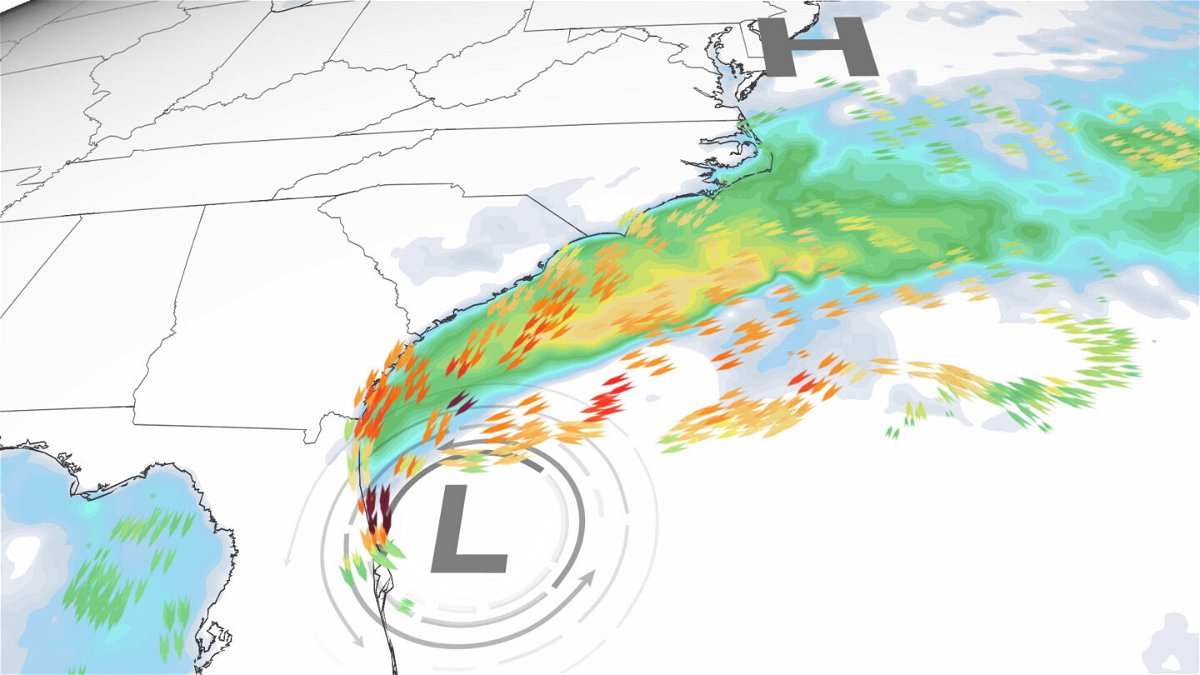A major coastal flood event, similar to a surge from a hurricane, is underway in Charleston, South Carolina

A potentially historic flood event is taking shape across Charleston Harbor
By CNN meteorologists Pedram Javaheri and Taylor Ward
A potentially historic flood event is taking shape across Charleston Harbor, South Carolina, and portions of coastal Georgia, including near Savannah, as water levels will be at heights usually found in powerful hurricanes.
The flooding will be exacerbated by a destructive combination of already higher-than-normal tides and a developing storm system, sending tide levels levels above 8 feet for Charleston and above 10.5 feet near Savannah, signaling major flood stage along the coast.
“It looks like an almost perfect combination of astronomical influences and meteorological conditions,” Blair Holloway, a meteorologist with the National Weather Service in Charleston, said.
The situation is similar to the storm which led to the coastal flooding in the Chesapeake Bay this past weekend. An area of high pressure situated over the Northeast and a strengthening storm in the northern Gulf of Mexico will work in unison to bring a prolonged period of northeast winds to the Charleston area.
Given the shape and orientation of the Carolina and Georgia coast, these northeast winds tend to push water toward coastal communities, bringing the most significant concerns for coastal flooding apart from those caused by tropical systems.
“Now you’re looking at a foot to potentially more than a foot and a half of extra water, almost like surge, which is the extra water due to the wind, being piled onto the normally already high astronomical tides,” Ron Morales, meteorologist at the National Weather Service in Charleston, told CNN Weather.
The impacts of the high tides and the developing system will send water levels above 8 feet on Friday and Saturday morning, peaking at 8.6 feet on Saturday morning. This is expected to be the highest level seen since Hurricane Irma (9.9 feet) in September 2017 and nearly the highest level for a non-tropical event (8.8 feet) on January 1, 1987.
“Roads, even areas that you’ve not seen flooded for quite some time, could see flooding. Even some structures could be flooded with these levels of water and some roads could be cut off,” Morales said.
Farther down the coast, in Fort Pulaski, Georgia, a few miles from the historic city of Savannah, waters are also expected to reach above major flood stage, forecast to peak at 10.6 feet on Saturday morning.
Since 1936, a peak tide of 10 feet or higher has been observed only 18 times.
“If we reach or exceed 10.5 feet, it will rank as at least the fourth-highest tide on record and would be the highest non-tropical on record. We’ve never seen the tide exceed 10.43 feet unless it is related to a tropical system, this would be exceedingly rare if not unprecedented,” said Blair Holloway, meteorologist at the NWS in Charleston.
“We’re particularly worried about the only road in and out — that goes from Savannah to Tybee Island — the road was raised up a few years ago, but at 10.5 feet we’re expecting issues there,” Morales told CNN Weather.
A climate catastrophe
Flooding of this magnitude has historically been reserved for the massive surge that comes with tropical systems, but in a warming world with rising seas, the tides are turning, both metaphorically and literally.
“Long-term sea level rise from rising global and ocean temperatures resulting from climate change makes coastal flooding events like this happen more frequently, with worsening impacts from higher floods,” said Brandon Miller, CNN meteorologist and climate crisis beat leader. “Sea levels have risen nearly a foot since the beginning of the 1900’s, which raises the baseline from which these floods occur — pushing nuisance floods from storms into record territories that used to only come in the strongest storms such as hurricanes.”
“We have much more coastal flooding now than we did a decade or two ago,” Morales said. “We have definitely seen an increase over the last five to 10 years of the amount of times that we reached that minimal threshold of 7 feet, which is what we call a coastal flood advisory.”
In Charleston, a water level of 8 feet has been reached 36 times in the last 100 years, but 22 of those times have been since 2015. Similarly, at Fort Pulaski, near Savannah, a peak tide of 10 feet or higher has only been observed 18 times since 1936, but 11 of those 18 occasions have happened since 2015.
The-CNN-Wire
™ & © 2021 Cable News Network, Inc., a WarnerMedia Company. All rights reserved.